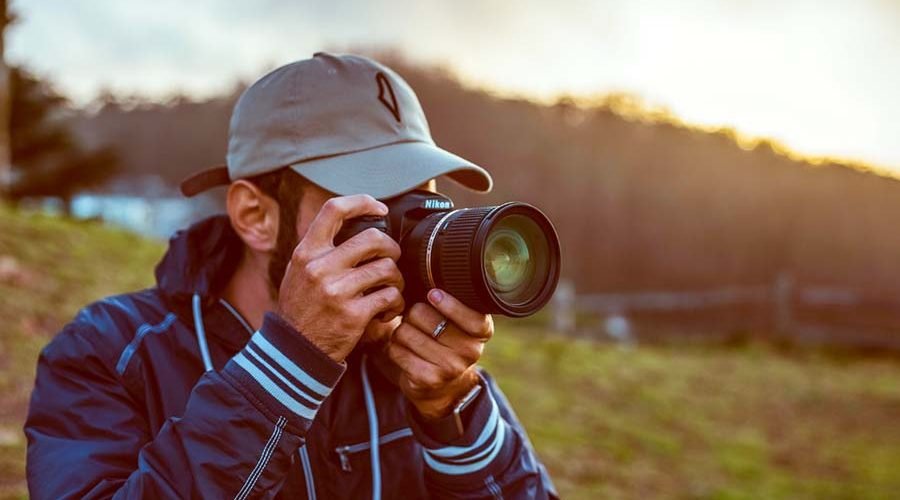The rule of thirds is a fundamental principle of photography that helps photographers capture stunningly beautiful images. It’s one of the first concepts that most photographers learn, and it’s an integral part of any photographer’s toolbox for creating compelling photos.
In this article, photographer Nicholas Palumbo, Charleston photographer explains the rule of thirds, how it works, and some tips for mastering this powerful technique.
Table of Contents
What Is The Rule Of Thirds?
The rule of thirds is a compositional technique in which you divide an image into nine equal parts with two imaginary lines running horizontally and vertically. This division creates four points at which the lines intersect, forming a 3×3 grid.
By placing critical elements within these points or along the lines, images can be more pleasing and draw viewers’ eyes to certain areas. The placement creates an overall sense of balance and harmony in your composition.
For example, imagine you want to photograph a sunset over a beach. You could put the horizon line in the middle of your frame, creating an unbalanced composition.
Instead, using the rule of thirds, you could place the horizon line along one of the grid lines (just below one-third or above two-thirds). Doing so would create more interest in your photo and draw viewers’ eyes to different parts of it.
Why Is The Rule Of Thirds Effective?
The rule of thirds works because it helps create balance within a composition, which adds interest and draws viewers into the frame. When used correctly, it can help lead viewers through a shot naturally by creating visual pathways through the frame.
The technique makes for much more compelling photographs than simply centering your subject matter in the middle of a scene. Additionally, following the rule of thirds allows you to incorporate negative space into your shots, making a significant visual impact when done correctly.
Now that you know the rule of thirds, let’s look at how to use it in your photography. Here are some tips for mastering this technique:
1) Think About The Viewer’s Eye
This will help you decide where to place critical elements within your composition. For example, if you want viewers’ eyes drawn towards a particular subject or element first, ensure it falls on or near one of those intersection points (or along one of those grid lines).
Let’s say, for example, that you wanted to take a portrait shot with someone looking off-camera. Placing them on one side along one gridline would work nicely by placing other elements elsewhere to provide context for what they were looking at (e.g., trees or buildings).
2) Use Leading Lines
Leading lines are visual cues directing viewers’ eyes toward specific elements within your image (like roads or pathways). You can create stronger compositions with more significant impact and drama by incorporating leading lines into your work.
Note, however, that the presence of leading lines may also stray from your initial view. Dominant lines such as the horizon or tree branches may conflict with the gridlines, thus making them less effective in leading viewers through shots naturally.
3) Try Framing
Framing refers to using objects like trees or archways as frames around your subject matter. The technique adds depth and focuses attention on them even more strongly.
To do this effectively, use the grids. Simply position these frames to align with or form part of one (or more) intersections points within your composition. Doing so will help give greater emphasis on whatever lies within those framed elements
4) Experiment With Symmetry
Symmetry can be used very effectively when shooting landscape shots and positioning elements such as mountains. Hence, they fall along one side (or both sides)of an intersection point(s).
You can achieve a good sense of balance in your compositions while drawing the viewer’s attention toward those particular elements.
One thing to note is that there is no need always to create perfect symmetry. The idea is to place critical elements along the lines or at their intersections, creating a visually pleasing composition. The result is often more dynamic than traditional symmetry.
5) Don’t Forget About Negative Space
Negative space refers to empty areas around subjects within an image. Effective use of these spaces creates balanced yet exciting compositions with less clutter.
Position your subjects along gridlines or intersection points while leaving plenty of negative space around them. This way, you can make those subjects “pop” visually while maintaining a sense of order and harmony throughout your image.
Placing your subject in the center of the frame can be static and uninteresting. Incorporating negative space can add depth and interest to your photos. So next time you snap a shot, don’t forget about negative space and how it can enhance your composition.
Final Thoughts
The rule of third offers photographers an easy way to use compositional techniques without worrying too much about technicalities like lighting and exposure settings, Nicholas Palumbo, Charleston photographer says. Experiment with the methods mentioned above; soon enough, you can produce stunning images every time!





